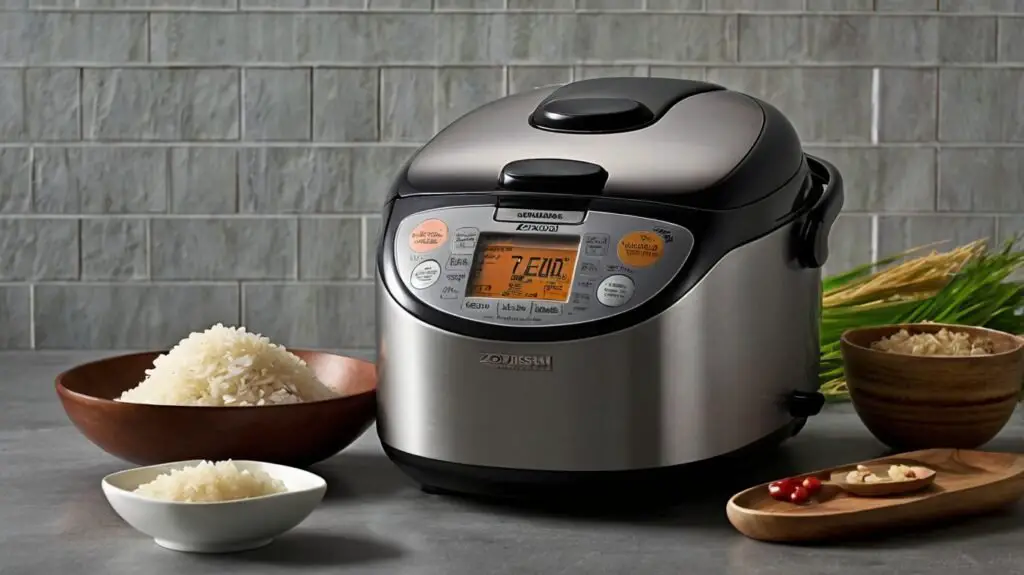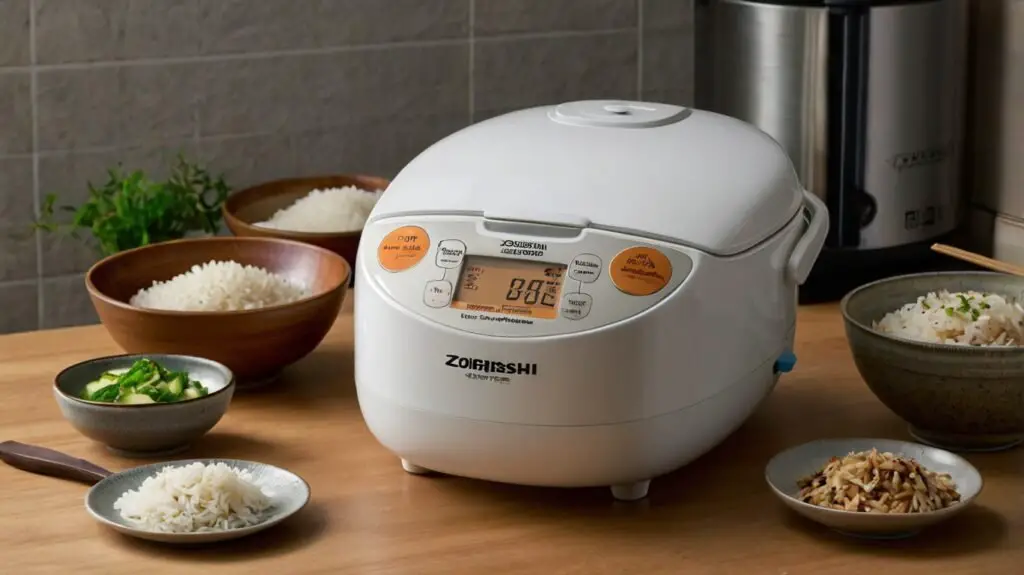Have you ever faced the dilemma of packing lunch that stays warm until lunchtime? I have, and that’s why I decided to try out both Zojirushi and Thermos food jars. In this blog, I’ll share my experiences and insights to help you choose the right one for your needs.
Overview of Food Jars
What are Food Jars?
Food jars are containers designed to keep meals fresh and at the right temperature. They’re essential for anyone needing to transport food safely. With busy lifestyles, many of us rely on these jars for our daily meals. But why are they so important?
The Importance of Insulation
Insulation is the heart of food jars. It allows us to keep meals hot or cold for hours. Imagine biting into a warm soup or cool salad during lunch; it makes all the difference. Insulated containers can maintain food temperature for over 7 hours. That’s impressive, isn’t it?
A Brief History
- Zojirushi was founded in 1918 and is known for its superb Japanese craftsmanship.
- Thermos started in 1904 and pioneered the world of insulated containers.
These brands have built a legacy in providing quality food jars. Without their innovations, our lunch options would be a lot less exciting.
Trends in Lunch Packing
Did you know that over 80% of employees in the U.S. bring lunch from home? This trend is gaining momentum. More people are now leaning towards healthy home-cooked meals instead of takeout. And with the rise of portable meals, food jars play a crucial role. They make eating healthy, delicious, and easy on the go.
Conclusion
Food jars serve a simple yet essential purpose: keeping meals at optimal temperatures wherever you go. They reflect the shifts in how we eat, making it easier to enjoy tasty, well-prepared dishes no matter where we are.
| Statistic | Value |
|---|---|
| Employees Bringing Lunch from Home | Over 80% |
| Temperature Maintenance Time | 7+ hours |

Zojirushi vs Thermos: Key Features
When it comes to food jars, Zojirushi and Thermos are two brands that often come up in discussions. Each offers unique features that cater to different needs.
Unique Design and Technology
Zojirushi jars are known for their distinct design. They combine functionality and style effectively. You won’t just appreciate their looks; the technology inside tends to be quite impressive.
Durability and Iconic Shape
Thermos, on the other hand, boasts durability. Their food jars feature an iconic shape recognizable by many. The robust construction makes them suitable for outdoor enthusiasts and everyday use alike. Who doesn’t love a reliable brand that stands the test of time?
Material Comparison: Stainless Steel vs. Plastic
Both brands offer a range of materials. Zojirushi often focuses on high-quality stainless steel, which is excellent for heat retention. In contrast, Thermos provides plastic options alongside stainless steel. Each material has its merits; it all depends on your preferences.
User-Friendly Features
Have you ever tried to pour soup from a narrow container? It’s a challenge! Luckily, both Zojirushi and Thermos focus on user-friendly features. They offer wide mouths for easy filling. Also, many models come with convenient carrying handles. You can see how thoughtful the designs are when everyday use is considered.
Temperature Retention
Now, let’s look at something that really matters: temperature retention. It’s a key factor for anyone using food jars. Here’s a comparison:
| Brand | Temperature Retention |
|---|---|
| Zojirushi | Up to 6 hours |
| Thermos | Known for 7-hour hot retention |
When comparing the two brands, the features tailored to users’ needs are pivotal. Zojirushi models often come with additional utensils, while Thermos offers a wide range of sizes for different needs. Consider these points as you make your choice between Zojirushi and Thermos!
Real-Life Use Cases: Which Food Jar Works Best?
When it comes to food jars, the choice often comes down to the kind of meal you want to pack. Today, I want to explore two popular options: the Zojirushi and the Thermos. Both have their strengths, and understanding their uses can help you decide which is the better fit for you.
Zojirushi: Perfect for Warm Meals
If you’re packing meals like soups or pasta, the Zojirushi food jar is a solid choice. It excels at keeping meals hot for hours, making it ideal for comforting lunches. Imagine opening a warm, hearty soup during your work break. Doesn’t that sound inviting?
- Can retain heat for up to 6 hours.
- Made with high-quality insulation.
- Easy to carry around without worry.
Thermos: Best for Breakfast and Snacks
On the other hand, the Thermos is fantastic for transporting breakfast items or quick snacks. Need to carry oatmeal to work or yogurt for your child’s school lunch? The Thermos is your friend.
- Great for hot and cold items.
- Lightweight and portable.
- Available in various sizes for different needs.
Packing for School vs. Work
When it comes to packing for school versus work, the preferences can change. For children, the fun shapes and sizes of Thermos containers can be more appealing. But for adults, the sleek, high-performance Zojirushi often tops the list.
Consider this scenario: a busy mom packing lunch for her young child might choose the Thermos for its playful designs and lighter structure. Meanwhile, she might reach for the Zojirushi when she’s off to the office, craving that warm meal.
User Testimonials and Experiences
Real-life experiences tell us a lot about these products. Data suggests that around 75% of users prefer Zojirushi for hot soups, while 60% find Thermos the go-to for breakfast items. These insights offer a good perspective on long-term usage and satisfaction.
In conclusion, there’s no one-size-fits-all answer. Your choice largely depends on your needs. So, whether you’re a busy parent trying to juggle lunches or a professional needing a hot meal on the go, understanding these options can make a significant difference.
Price Comparison: Getting Your Money’s Worth
When choosing between food jars, understanding the price is key. But what does that price reflect? Is it truly indicative of quality? Today, let’s dive into the cost analysis of popular brands like Zojirushi and Thermos.
1. Cost Analysis of Both Ranges
First off, let’s look at the numbers:
- Average Zojirushi jar price: $40
- Average Thermos jar price: $35
The difference isn’t huge. But why is one brand slightly more expensive? It often comes down to features. For a few extra dollars, you may get better insulation or additional perks. Sometimes, it’s about the brand name and reputation. Are you paying for quality or just a label?
2. Budget Options: What to Expect Under $30
If your wallet is a bit tighter, not all is lost. There are budget-friendly food jars available for under $30. Expect:
- Basic insulation – your food will stay warm, but not as long.
- A less durable build, primarily plastic or lower-grade materials.
- No fancy bells and whistles.
Budget jars can serve a purpose. They might work well for picnics or casual outings where top quality isn’t a must. Just remember, you might sacrifice some performance for that price.
3. Mid-Range Quality Assurance
The sweet spot often lies in the mid-range, and sales trends support this notion. I’ve noticed many users report higher satisfaction with mid-range options. Priced between $30 and $50, these models usually offer better build quality and insulation. You get more features for a reasonable amount of money.
Mid-range purchases often eliminate worries about quality. They’re solid investments for daily use.
4. Premium Models: Are They Worth It?
Finally, let’s chat about those premium models. Do they live up to their steep price tags? Sometimes, yes, and sometimes, maybe not. Premium brands promise advanced features, better materials, and, quite possibly, a longer lifespan. But consider: will you actually use those high-end features?
In essence, while price often dictates choices, it’s essential to evaluate how *features* correlate with that price. A higher cost might not always mean a dramatically better product.
As you consider your next food jar purchase, weigh your options. What’s more important to you? Cost, quality, or features? These factors will guide your decision.

Conclusion: Making the Choice
As we wrap up our discussion on Zojirushi versus Thermos food jars, it’s clear that each jar has its unique strengths. Zojirushi is known for its exceptional insulation and capacity to keep food hot for hours. On the other hand, Thermos often shines with its variety of styles and price points. But which one is right for you?
Evaluating Your Needs
The decision often boils down to your lifestyle, budget, and the type of meals you pack. Do you need a jar that keeps soup steaming? Go for Zojirushi. Want something to carry a variety of meals, including cold salads? Thermos offers great options.
Factors to Consider:
- Lifestyle: Are you often on the go? Do you prefer cooking at home?
- Budget: Consider how much you’re willing to spend. Zojirushi tends to be pricier.
- Meal Type: Hot, cold, or both? Think about the meals you plan to store.
It might even be a good idea to try both. After all, sometimes hands-on experience is the best way to know what fits your needs. So, why not test them out? Find what truly suits you.
User Preferences and Market Trends
It’s fascinating to see how user preferences shape the market. Manufacturers are constantly adapting their designs to meet changing demands. This means we may even see new models coming out soon, tailored to current trends in lunch packing.
In conclusion, choosing between Zojirushi and Thermos isn’t simply a brand choice. It’s about identifying what you need in your everyday life. With both brands offering distinct options, you have the chance to find the perfect match. Analyze what matters to you, weigh the pros and cons, and make an informed choice. Happy lunch packing!
TL;DR: Both Zojirushi and Thermos provide excellent food jars, but depending on your specific needs and preferences, one may suit you better than the other. In this article, we’ll unpack the differences and help you decide.
